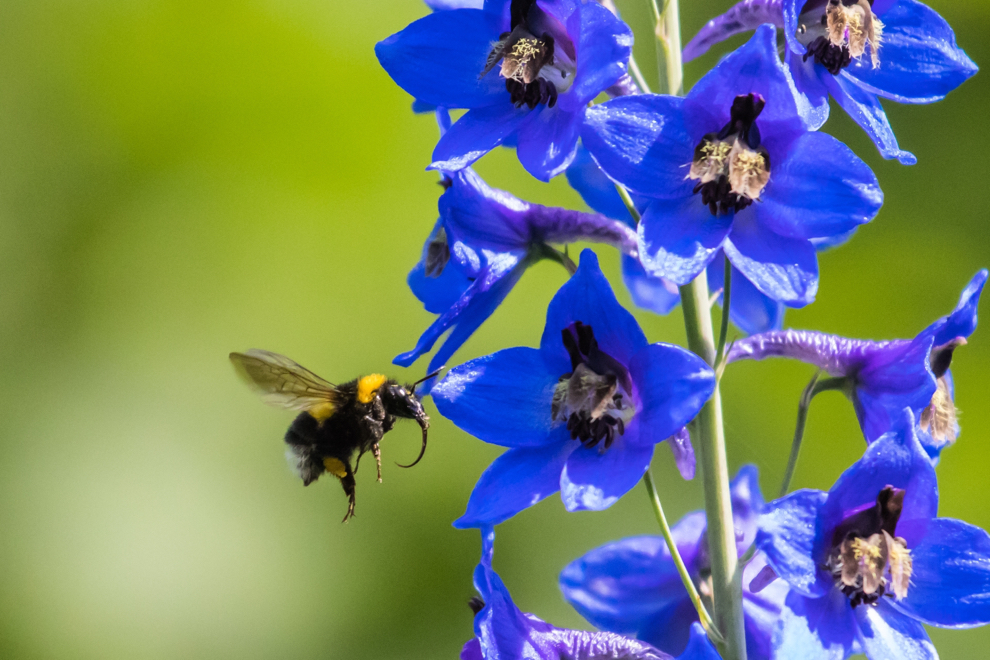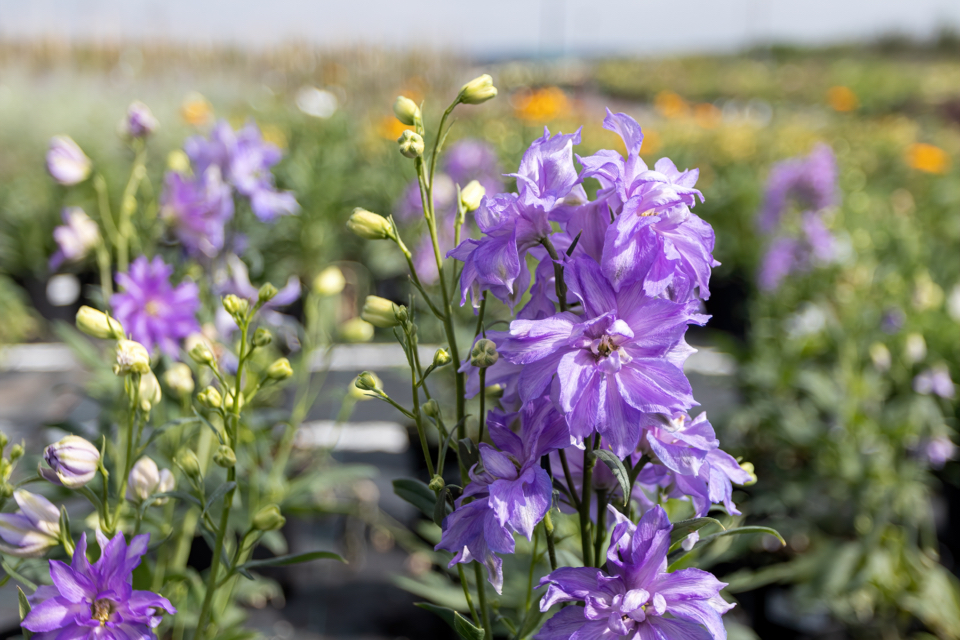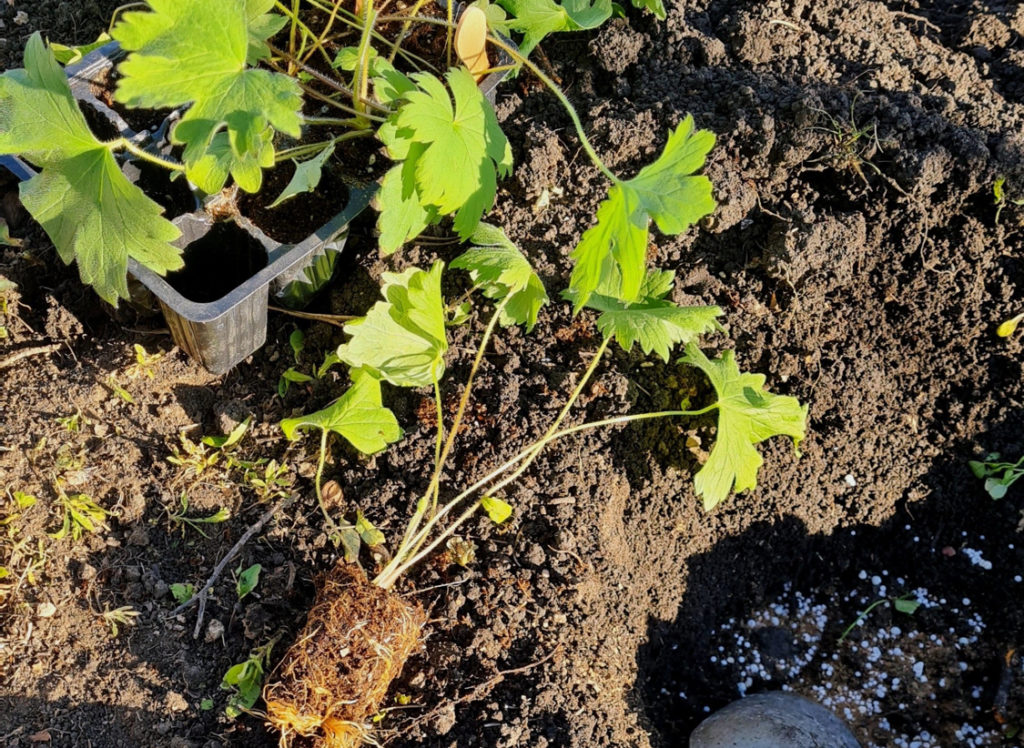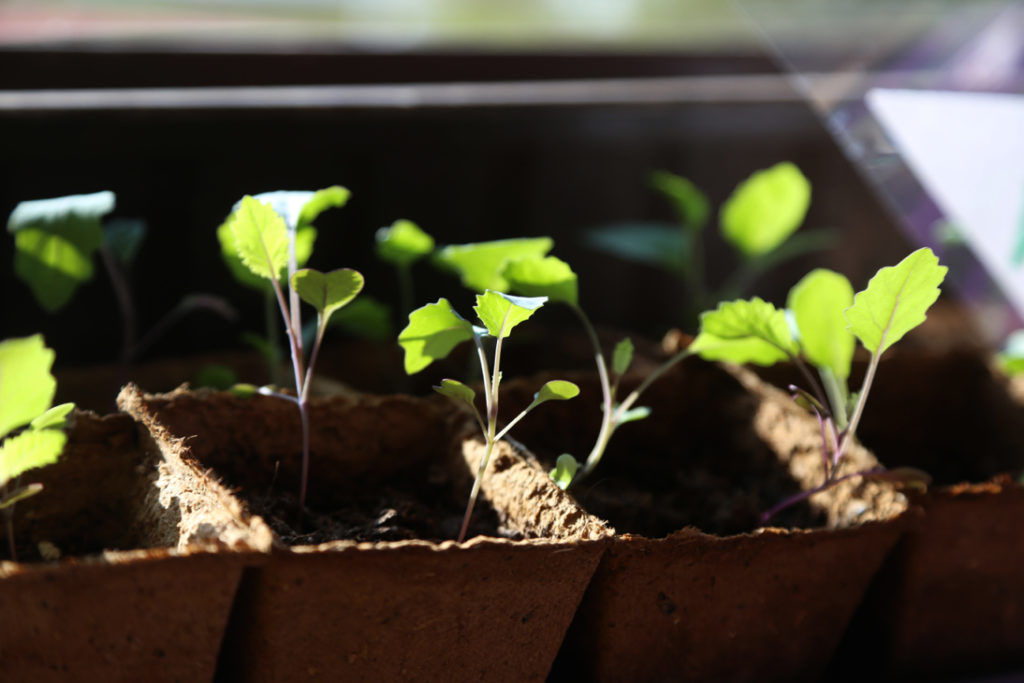Sowing Delphiniums: ‘Keep Seeds In The Dark Until They Germinate To Improve Rates’

PERENNIALS > DELPHINIUM > SOWING
Chris is a gardening writer and nature enthusiast. He graduated from Oxford Brookes University in 2022 with an MA in Psychology. Chris works with the Leeds Green Action Society, helping their food cooperative by growing various fruit and vegetables on their two allotments in Hyde Park, Leeds.
Reviewed By DAN ORI

Dan has over 27 years’ under his belt caring for plants and gardens. Working as a Horticultural Instructor and Consultant, he draws on a diverse range of experience that includes working as a Head Gardener, Tree Surgeon, Garden Centre Trouble Shooter, and writer of academic papers. Dan has a Level 3 Diploma in Horticulture and is currently a candidate for the RHS’s most prestigious award – The Master of Horticulture.
Contributions From GRAHAM AUSTIN

Graham Austin is a Delphinium expert and RHS 2022 Gold Medalist who is the owner of Home Farm Plants, a specialist plant nursery.

Emily is a Gardening Writer, Photographer and Videographer from Derbyshire, UK. She is the Founder of Emily's Green Diary - a community of more than 75,000 people who share in her gardening journey.
IN THIS GUIDE
DELPHINIUM GUIDES
Deadheading
Growing From Seed
Growing In Containers
Propagating Cuttings
Support
Varieties
Winter Care
Delphiniums flower early in the summer and make an attractive contribution to any garden.
These plants often reach high into the air, making them truly eye-catching.
As a very traditional flower, delphinium has held its place in British gardens for a long time.
It’s pretty, there are tons of colours to choose from, and it attracts bees as well as other wildlife.

They also look lovely in vases too, so you can trim bits off when the mood takes you and bring them indoors, or, to make yourself extra popular, give them out to friends.
Growing delphinium from seed isn’t too challenging, either.
Here’s all you need to know about growing delphiniums from seed:
| Difficulty | Medium |
| Equipment Required | Seeds, compost, propagation tray |
| When To Sow | Indoors January to March; outdoors between June and July |
| When To Plant Out | March, April, or May |
When To Sow
Delphiniums are best sown in March or April, just after the last frost and in plenty of time to be ready for flowering season.
How To Sow Indoors
Here’s how to grow delphiniums from seed indoors:
1) Give Your Seeds A Cold Start
Delphinium seeds like a cold start, so pop them in the fridge for about a week before you plan to plant them out.
Right before planting, you should take them out of the fridge.
Graham Austin from Home Farm Plants recommends keeping the seeds below 15-20°C, as any warm temperatures could disrupt germination.
2) Sow The Seeds
If you’re sowing delphinium indoors, you’ll want to start about 8 weeks ahead of the last frost.
This will give them time to get established enough for planting out.

Fill a seed tray with a layer of compost, and then distribute the delphinium seeds across its surface.
Cover the seeds with another very thin layer of compost about 30mm deep.
“Keep your delphinium [seeds] in the dark until they germinate to improve rates”, Graham Austin suggests.
3) Wait For Them To Sprout
Delphinium seeds take a few weeks to sprout, so during this time you just need to monitor them.
Give the soil a spritz occasionally if it’s drying out, but don’t let the seeds get too wet.
4) Harden Off Your Seedlings
Once your delphinium seeds have sprouted and are starting to look strong enough to go out, you’ll need to harden them off.
This is a process by which you acclimatise the seeds for their life outdoors.

At first, you’ll want to place the seed tray outdoors for a couple of hours a day, then gradually increase this to get them used to longer spells.
Choose a sheltered spot so they’re not at the mercy of the weather.
5) Prepare The Flowerbed
Delphiniums are famously hungry, so I recommend composting the soil before planting them out.
This ensures they’ve got access to the nutrients they need to grow big and strong.
6) Plant Out The Seedlings
Once they’ve been hardened off, your delphinium seedlings are ready to start their new life.
Carefully move each seedling from the seed tray to its spot outdoors.

Leave about 45cm between each seedling so they have space to thrive: this may seem excessive at this stage, but remember, delphiniums are renowned for growing to huge sizes.
My take is that it’s much easier to give them the space they need at this stage than to be left wanting later on.
How To Sow Outdoors
Growing these flowers outdoors right away is possible too.
Here’s how to do it:
1) Give Your Seeds A Cold Start
This is the same as step one in the previous section: just pop your seeds in the fridge for a week to cool them down.
“I have certainly had success with this cold start method for indoor and outdoor sowings,” shares Horticulturist Dan Ori.
“This is most likely due to the replication of winter dormancy a seed would encounter outdoors.”
2) Germinate Seeds
This is an optional step, but you can give your seeds a little head start by placing them on a wet toilet roll or coffee filter paper and then folding it over the top.

Store these pockets somewhere with a bit of light, and after a week or so they should sprout.
3) Sow Directly Into Flower Beds
In the early summer months you can sow delphinium seeds directly out into flower beds or your container of choice.
Distribute seeds across the soil evenly and cover with about 30mm of soil.
